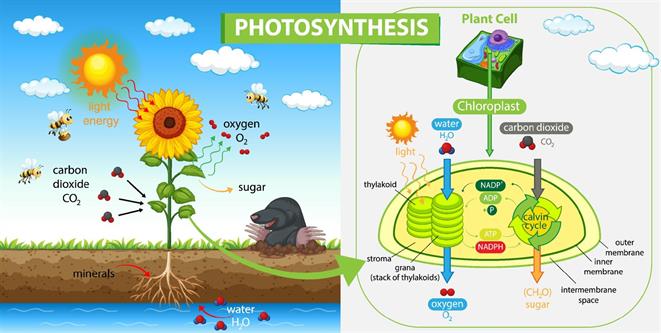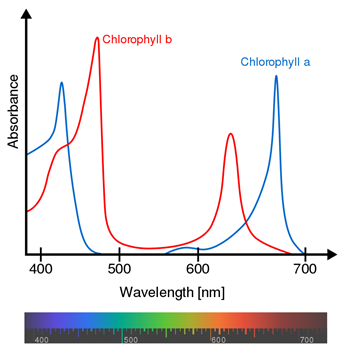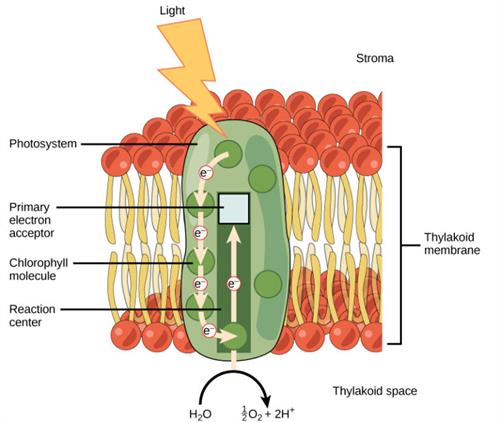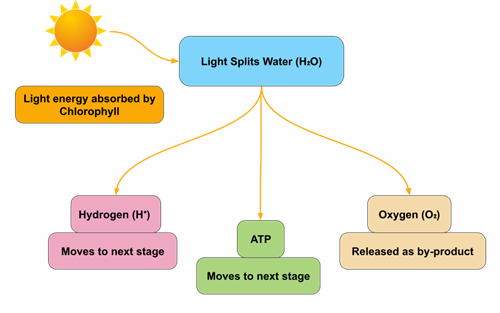
PUMPA - SMART LEARNING
எங்கள் ஆசிரியர்களுடன் 1-ஆன்-1 ஆலோசனை நேரத்தைப் பெறுங்கள். டாப்பர் ஆவதற்கு நாங்கள் பயிற்சி அளிப்போம்
Book Free DemoThe process of photosynthesis can be broadly classified into three stages as follows:
- Absorption
- Conversion
- Reduction

1. Absorption
It is the process wherein the chlorophyll pigment present in the chloroplasts of the leaves traps the sunlight. This is mainly done by the photosystems found in the thylakoid membranes of the chloroplasts. Initially the light energy (photons) is absorbed by the photosystem II.
The photosystem II absorbs the shorter wavelength of light \(680\)nm.

The absorption rate of chlorophyll a & b
2. Conversion
This is the stage during which the photons absorbed by the PS II split the water absorbed by the plants into hydrogen atoms (2 electrons) and oxygen atom (nascent oxygen [O]). This reaction wherein water is split up by light is known as photolysis of water.
This is an oxidation reaction as electrons are liberated.

Photolysis of water
Fate of oxygen and hydrogen:
The oxygen produced in this reaction is released into the atmosphere and serves as the oxygen we breathe in. The hydrogen produced is used in the reduction reactions of the photosynthesis which are involved in the production of glucose.

Fate of the products of photosynthesis
3. Reduction
These are a set of reactions in which the hydrogen atoms (electrons) liberated are used for the production of sugars. During this the carbon dioxide taken up by the plants is reduced by these electrons into sugars.
Reference:
https://commons.wikimedia.org/wiki/File:Chlorophyll_ab_spectra-en.svg
http://cnx.org/contents/b3c1e1d2-839c-42b0-a314-e119a8aafbdd@8.10:1/Concepts_of_Biology.